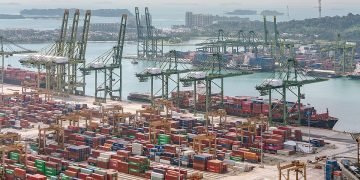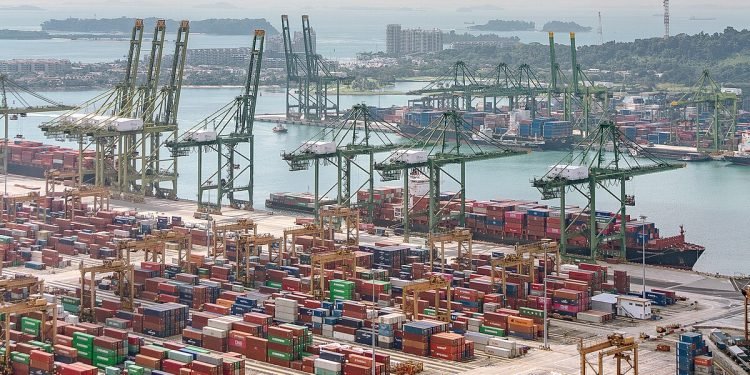Facing mounting pressure from a surge in global trade, Singapore, a major maritime hub, has announced the reopening of several disused container terminals [1]. This move aims to address persistent bottlenecks and congestion plaguing the world’s busiest port, ensuring the smooth flow of goods through the vital trade artery.
Singapore: A Global Trade Powerhouse
Singapore’s strategic location in Southeast Asia, coupled with its world-class infrastructure and efficient logistics network, has cemented its position as a global leader in container shipping. Millions of containers transit through Singapore’s ports annually, connecting Asia, Europe, and other key markets.
Bottlenecks and Rising Concerns
However, recent months have seen a significant increase in cargo volumes, overwhelming existing port capacity. This has resulted in longer waiting times for ships, delayed deliveries, and rising shipping costs. Concerns have mounted within the industry as these disruptions threaten to disrupt global supply chains already strained by the pandemic.
Reopening Disused Terminals: A Strategic Move
The Singaporean government’s decision to reopen previously closed container terminals is a strategic response to these challenges. These terminals, once deemed unnecessary due to advancements in automation and efficiency measures, offer additional space to handle the influx of cargo.
Benefits and Challenges
The reopening of these terminals offers several potential benefits:
- Reduced Congestion: Increased space will help alleviate congestion at existing terminals, leading to faster vessel turnaround times and improved efficiency.
- Enhanced Capacity: The additional terminals can accommodate more cargo volume, ensuring the smooth flow of goods through Singapore’s ports.
- Lower Shipping Costs: Reduced congestion and faster turnaround times could potentially translate to lower shipping costs for businesses relying on maritime trade.
However, challenges remain:
- Operational Readiness: Reopening disused terminals may require refurbishing infrastructure and ensuring adequate staffing to handle increased cargo volumes.
- Long-Term Solution: The reliance on previously closed terminals might be a temporary solution. Long-term strategies for expanding capacity are crucial to accommodate future growth in global trade.
The Road Ahead
The reopening of disused container terminals in Singapore signifies the proactive approach taken by a major maritime hub to address global trade challenges. While operational hurdles need to be addressed, this move offers a glimpse of potential solutions to ease current bottlenecks and ensure the smooth functioning of global supply chains. As global trade continues to evolve, Singapore’s ability to adapt its infrastructure and capacity will be crucial in maintaining its position as a leading maritime trade center.























